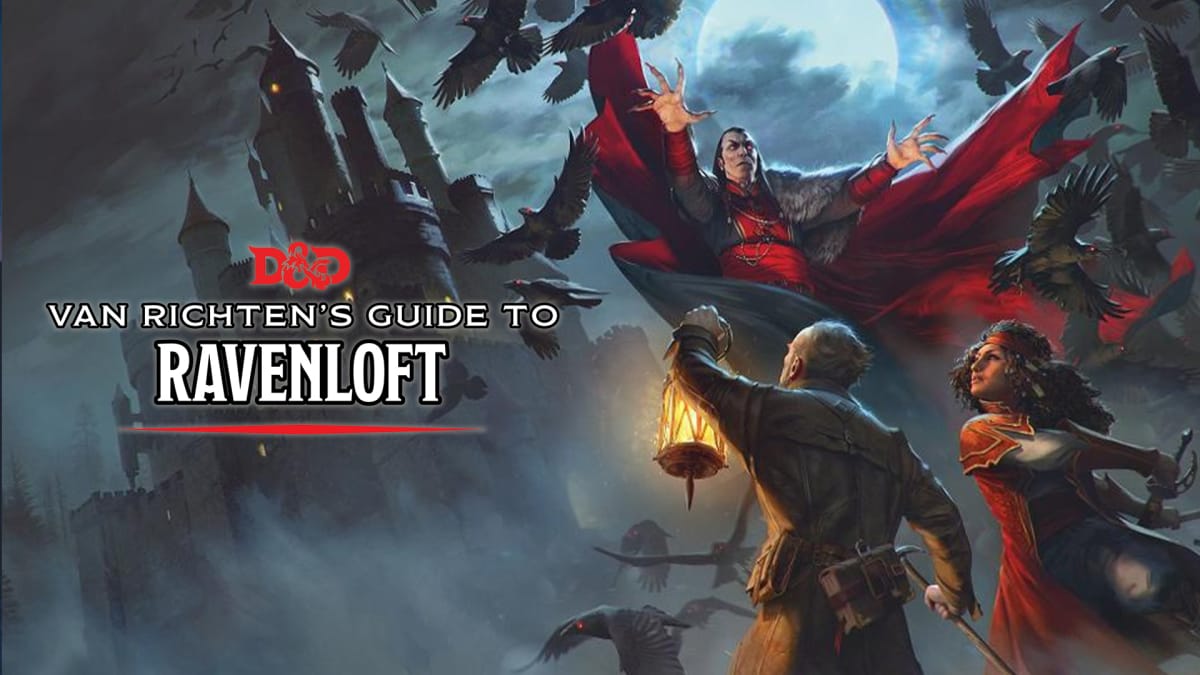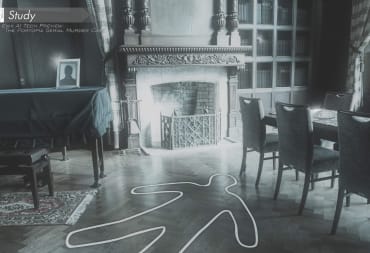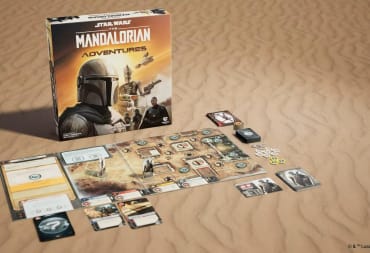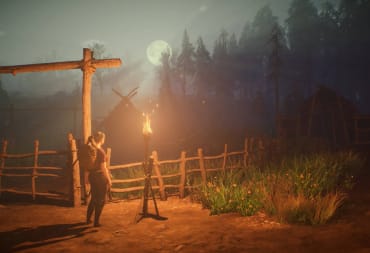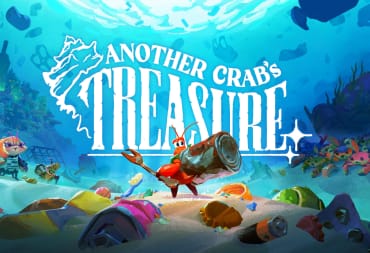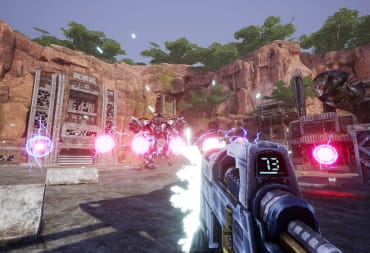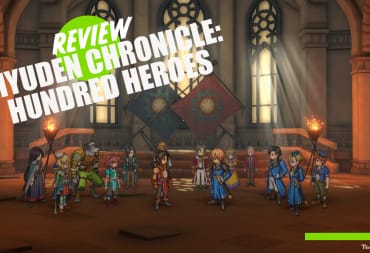Horror is weird in more ways than one. Weird in the literal sense as horror typically deals with the inhuman or unearthly and in a more meta sense. Despite the primary goal of horror being to repel, disgust, or terrify, many people worldwide really love horror, and the scarier something is, the more fans it's liable to have. Apparently, you can include the team over at Wizards of the Coast in the list of horror fans, as Van Richten's Guide to Ravenloft is one of the biggest love letters to the horror genre ever written.
Van Richten's Guide to Ravenloft is the latest release in a long line of D&D 5th Edition sourcebooks to feature 'Guide to' in the title. You may already be familiar with Volo's Guide to Monsters or Xanather's Guide to Everything, both of which were complete guides to their respective subjects, i.e., monster and everything. This latest entry is a guide to Ravenloft, a campaign setting with the game since Advanced Dungeons & Dragons, which features multiple mini-domains filled with all manner of classical horror set-pieces. So how well does this latest tome succeed in bringing the setting into 5th Edition? Let's take a further look.
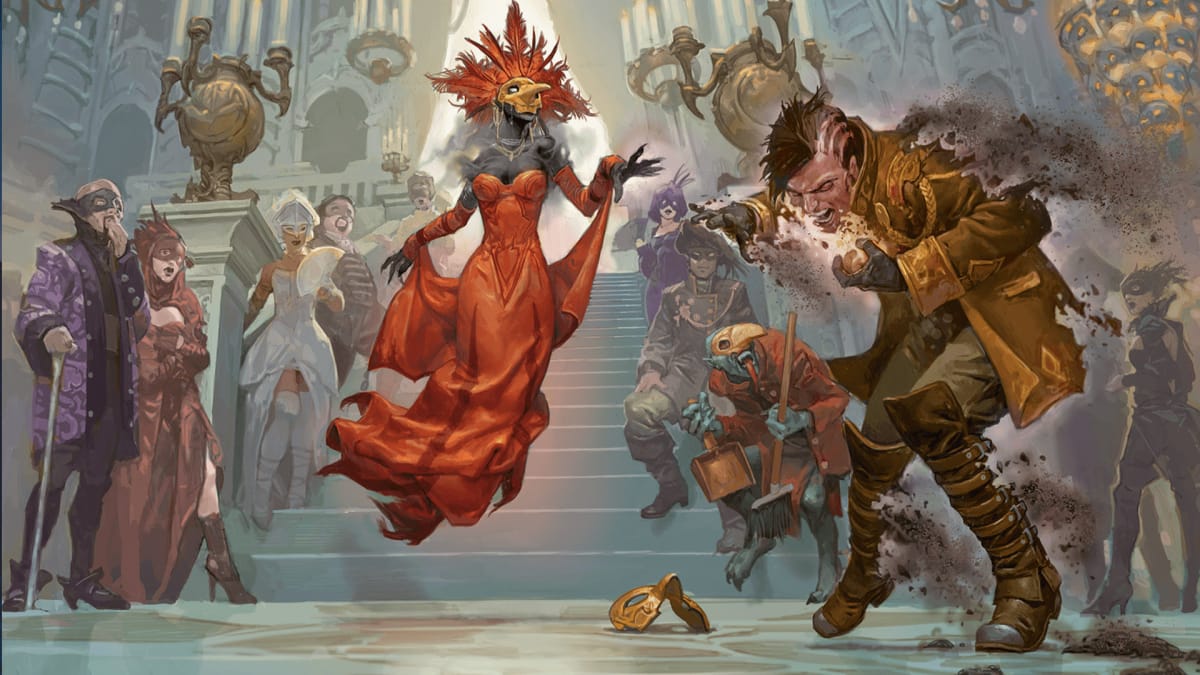
Van Richten's Guide to Ravenloft | Layout & Usability
One of the most important elements of any sourcebook, whether for campaign settings or adventure modules, is how easy it is to read and use it for both the DM and the players. In that regard, WOTC has done an excellent job of making the book nice and easy to use. Sections are clearly marked and separated by what you'll use them for, rather than by their theme or the part of the settings they're about. Chapters are labeled things like "Character Creation" or "Creating Domains of Dread" rather than anything more in flavor. It might seem obvious, but it wouldn't be the first sourcebook to use weird headings and become unusable as a result.
Part of the reason that the book is so easy to use is the introduction section. As well as going into more detail about each chapter and how they work, the intro gives you an overview of the Ravenloft settings, in case this is your first encounter with it. The first few pages also feature several letters between several of the key characters involved in the Ravenloft setting, which is a great way of adding some flavor without getting overwhelming, the total opposite of some RPG books that just punch you in the face with lore.
Overall this introduction is a great way of getting the reader acquainted with the settings, laying out some of the key rules, what you can expect from the book in general, as well as making the various themes and tools you'll need to be familiar with. In general, a lot of care has been taken with the layout of all chapters of the book to make it easy to use for everyone. The only real downside on that front is that there's no section at the back containing the more regularly used charts or tables from the book, so you either have to keep them bookmarked or make your own print-out cheat sheet.
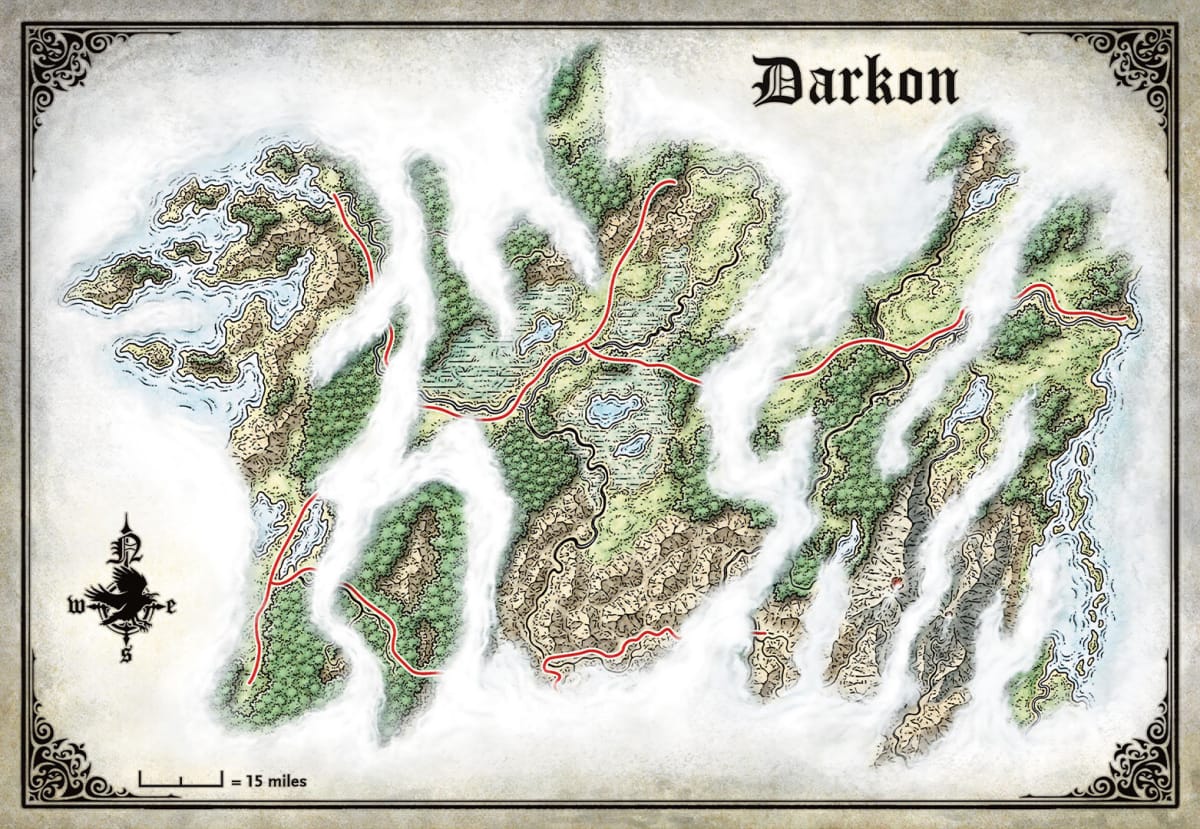
Van Richten's Guide to Ravenloft | New Character Content
An element of supreme importance to players in any sourcebook is the new stuff it gives them access to when creating their characters, and Van Richten's Guide to Ravenloft is no exception. Along with the general guide to the Ravenloft setting, you also get 2 brand new class specializations and 3 new races to choose from when creating your character. I say races actually included are 3 new lineages, which can either be your chosen race when you start the game or overshadow your character's original race if you choose to take them during a campaign or adventure.
The new character lineages are pretty awesome, and all 3 are obviously things that involve being turned in one way or another. The Dhampir is a half-vampire creature with less power than a vampire but also fewer drawbacks. The Hexblood is a lineage of fey creatures turned from their original races by the blood of a hag, and the Reborn are zombies but with more sex appeal. In all 3 cases, these lineages are incredibly customizable, featuring different ways of obtaining them, as well as different ways of them affecting your character.
The most important part of these new lineages is that they get players excited about the possibilities when it comes to making a new character, and all three of these do that job with aplomb. Being able to create a half-vampire who sucks on Dreams rather than necks, or a zombie who just died one day but didn't notice is great, and the wealth of options available to them is sure to get any player's mind working overtime. There are also extra options such as Dark Gifts and horror characteristics that really give you the option of creating a character who feels like they're part of the Ravenloft setting.
The new class specializations are a little less interesting as they can only apply to either a Warlock or a Bard. For Warlocks, the undead patron option allows them to choose a greater undead being as their source of power. While this does give out a few nice options, including the ability to look more like your chosen patron, the changes only really affect your 'Otherworldy Patron' features. The Bard's College of Spirits is certainly more thematically interesting. It expands the items you can use as a focus, but once again mainly has a minimal effect outside of a free cantrip and the ability to tell magic stories.
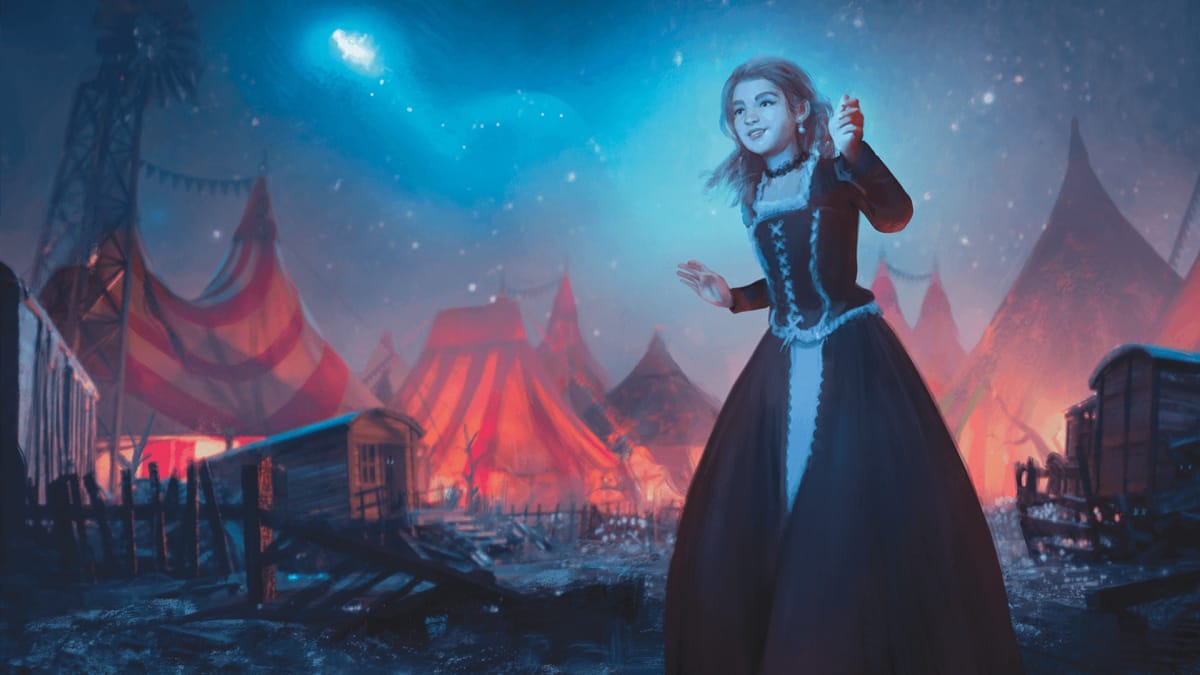
Van Richten's Guide to Ravenloft | A Deluge Of Dreadful Domains
One of the main features of the Ravenloft setting is the domains of dread. These are basically tiny pocket dimensions that are each bordered by a thick mist that prevents easy travel between them. Each domain is themed after a different type of horror or a different character. Because there is a functionally infinite number of these domains, you can basically create one to feature whatever blend of horror that you like. Even if you don't want to go to the trouble of making your own, there are a huge number of these set out in the book in great detail.
Honestly, this is one of the biggest strengths of the setting and Van Richten's Guide to Ravenloft as a sourcebook. Thanks to the way the setting is constructed, a huge variety of different locations and disparate themes can all be covered rapidly. Of course, that's also true of the book. Without feeling like any of the domains or genres are being overlooked, you run the complete gamut from classic monster movies to zombie apocalypse dramas, even covering some of the more niche genres like cosmic and body horror.
Each of the domains covered in the book features examples of monsters, locations, characters, and in many cases, maps and illustrations. As a result, you get a really good look into the fine details that define the different domains, not only making them easier to use in a campaign but also making it easier to construct your own. The sheer amount of detail and variety that is packed into this chapter alone is worth the price of entry, and there's almost certainly much more going on here than in any of the previous versions of this campaign setting.
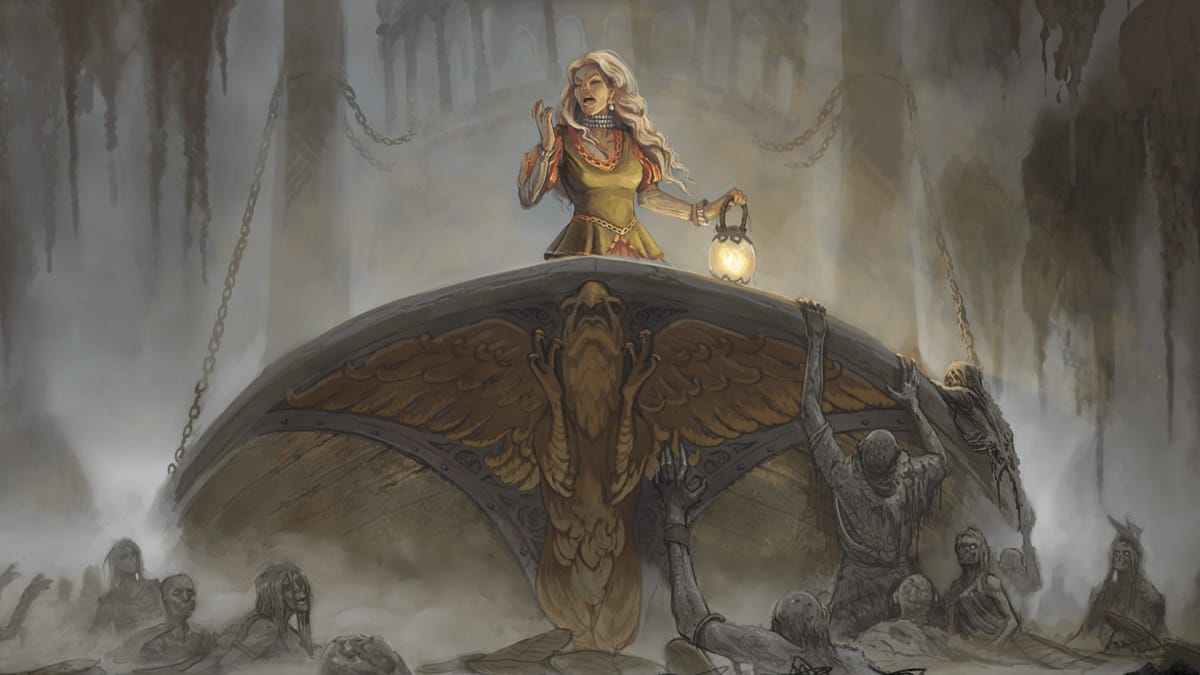
Van Richten's Guide to Ravenloft | Monsters & Adventure
As well as the domains it lists, Van Richten's Guide to Ravenloft has one more tool to help both DMs and players acclimatize to the campaign setting: an intro adventure. The adventure, titled The House of Lament, is a short adventure for 4 - 6 1st level adventurers. However, as with any adventure, you can adjust the difficulty up or down on the fly pretty easily. In the adventure, you're tasked with investigating a literal haunted mansion, discovering what is going on there, and hopefully escaping with your lives.
The House of Lament is a pretty great way of getting started with Ravenloft for a gaming group. It's relatively short, but its classic horror themes of a haunted house should be familiar enough to run easily and enjoyably. It's also designed as a springboard, so it's pretty easy to launch from the adventure into a full-on Ravenloft campaign if that's what you're looking for, but you can also use it as a one-off. All-in-all, this adventure is a great taste of the setting and is easy to run even for a novice GM, though applying horror to a TTRPG takes some getting used to.
The final section of Van Richten's Guide to Ravenloft is a mini monster manual covering the strange creatures and spirits you'll come across in the setting. This monster menagerie is incredibly comprehensive and goes for a similar level of customizability in many cases. Swarms of insects, cosmic horrors, and even zombies give you plenty of ways to mold monsters into the shape that works best for you. A personal highlight is probably the Wereraven, though, because that just sounds cool.
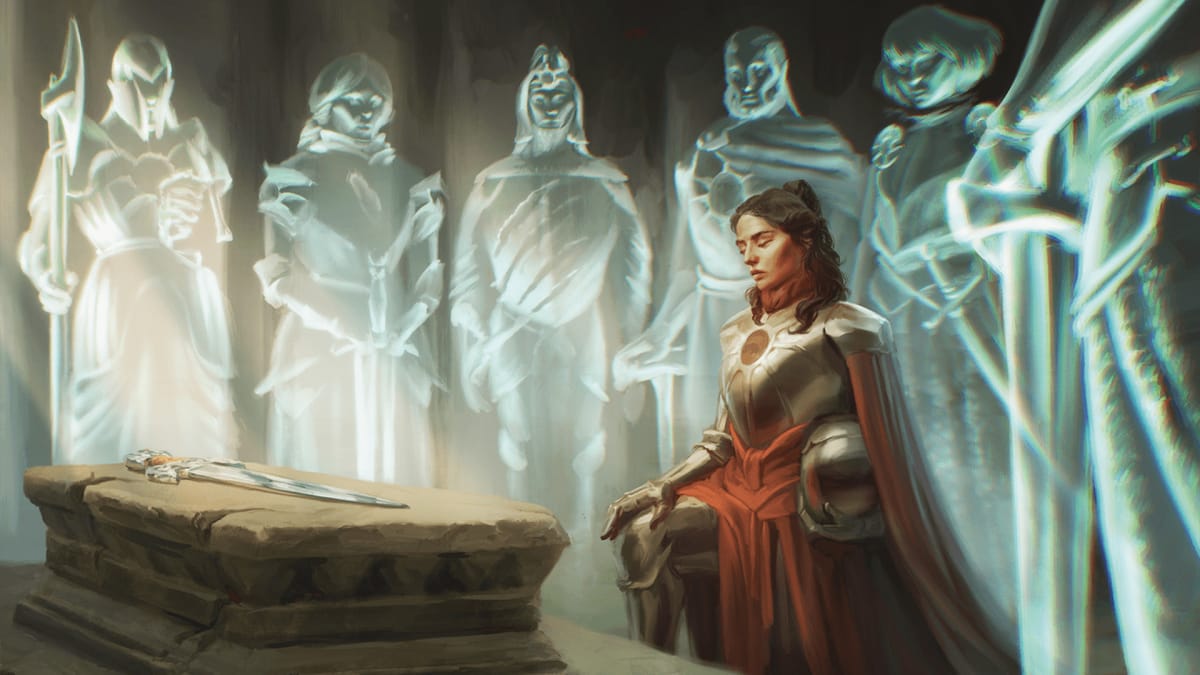
Van Richten's Guide to Ravenloft | Getting To The Art Of The Issue
One of the aspects of a sourcebook like this that is most likely to get a potential buys attention is the art of the book. Van Richten's Guide to Ravenloft comes with two different covers available. The regular features art of Van Richten himself and Ez d'Avenir confronting the vampire Strahd von Zarovich, while the special edition features a special filigree border, with art depicting Ez d'Avenir clutching a lantern as she is surrounded by monsters, while the disembodied head of Strahd looks on, clutching a sword with a figure reflected in it.
If it's not clear from the descriptions above, the art on the special edition is considerably more appealing. The art on the regular cover is fine but doesn't really stand out much against other D&D covers. The special edition looks like a horror movie poster and sells the contents of the book much more. The actual content of each book is the same, including the internal art. The pieces that you find inside the book are similar to the regular cover, nothing to write home about, but all pretty much competent art pieces.
The biggest letdown about the art of the book is that it all goes for a consistent style. With so many different sub-genres of horror on display, it would have been nice to see some more stylized art. Having said that, there are a few pieces that really do stand out, such as the art on page 23 for the section on dark gifts. This piece has a lot going on and interesting use of light and shadow, but other than this piece, you may struggle to find art that will leave a strong impression once you're done reading the book.
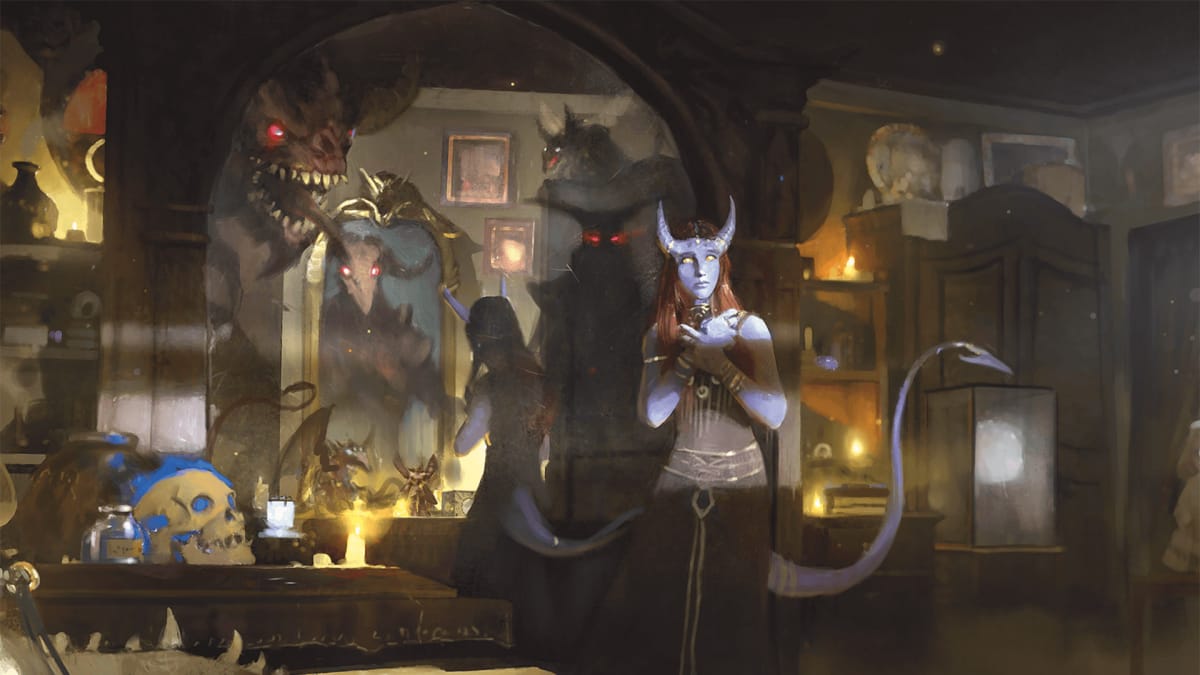
Van Richten's Guide to Ravenloft | The Bottom Line
Overall, Van Richten's Guide to Ravenloft is the perfect sourcebook if you want to inject horror into your D&D sessions. It is easily one of the most varied and interesting takes on the Ravenloft setting that we've ever seen. It features the right amount of flavor and theming without letting either get in the way of imparting the needed information, mostly relegated to details a lot of people probably wouldn't even notice. While the artwork is a little underwhelming in places, there are a few standout pieces that are worth your time, and that variety cover is a total masterpiece. Whether you want to run a game in Ravenloft or just want a great sourcebook for horror adventures, you won't find a better option than this.
Get This Book If:
- You want to run a horror-themed D&D game, in or out of the Ravenloft setting.
- You've enjoyed the setting before and want to see how it's been updated.
- You need a book with a Wereraven in it.
Avoid This Book if:
- You're looking for something with standout art on every page.
- You don't enjoy horror at all.
- You're scared of Wereravens.
The Copy of Van Richten's Guide to Ravenloft used in this review was provided by Wizards of the Coast.
Have a tip, or want to point out something we missed? Leave a Comment or e-mail us at tips@techraptor.net
